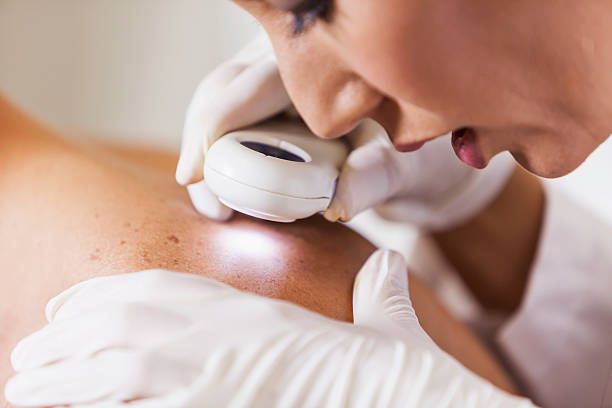- Center on Health Equity & Access
- Clinical
- Health Care Cost
- Health Care Delivery
- Insurance
- Policy
- Technology
- Value-Based Care
AMCP Studies Highlight Workplace Costs of Skin Care
Studies presented at Academy of Managed Care Pharmacy Nexus 2021 elucidated costs of skin treatment for workers in terms of recovery time taken and percentage of salary.
Employees with skin conditions use multiple types of benefits when absenting themselves from work to recover, which makes it difficult to apply a one-size-fits-all formula to the estimation of costs; however, there is a strong correlation between improvement in skin condition and reductions in worker productivity loss (WPL), according to studies presented at the Academy of Managed Care Pharmacy Nexus 2021 meeting.
Cost vs Disease Severity
In a retrospective study of US patients with plaque psoriasis, investigators compared baseline disease severity and the indirect cost (IDC) of WPL with 6-month measures of indirect costs and productivity loss.
“These…analyses demonstrated that higher psoriasis severity at baseline resulted in greater WPL and associated valuation of IDC”; however, at the 6-month point the highest rates of skin condition improvement among patients correlated directly with the greatest reductions in WPL and IDC, investigators said.
They evaluated records in the CorEvitas Psoriasis Registry from April 2015 through August 2020 for 2620 patients (N = 2620; mean age 50 years; 53% men) who had initiated biologic or nonbiologic systemic therapy.
Authors of the study said 13% of patients had mild disease at baseline; 47%, moderate; and 40%, severe. The mean WPL at baseline was 17.8% with an annual IDC of $9241.
Severe disease was more common among patients with higher WPL and larger IDC burden (mild disease, $5192; moderate $8307; severe, $11,733), authors of the study wrote.
Mean work productivity following 6 months of psoriasis treatment had improved by 9.2% and IDC had declined $4776 on average from baseline.
Investigators said higher levels of skin clearance correlated directly with improvements in work productivity and reduced IDC.
The mean work productivity improvement was 5.5% for those with 1% to 49% body surface area (BSA) clearance; and the associated IDC reduction was $2855. For those with 50% to 74% BSA clearance, the respective figures were 7.6% and $3946; for 75% to 89% BSA clearance, 10.7% and $5555; 90% to 100% BSA clearance, 13.9% and $7216.
“These results suggest that achievement of higher levels of skin clearance may help contribute to increased work productivity and associated reductions in the valuation of IDC related to WPL among patients with psoriasis,” authors of the study concluded.
Measuring Costs of Treatment
In the second retrospective study, investigators drew data from the Workpartners Research Reference Database to understand the prevalence of skin conditions, the sick leave (SL) taken, and short- and long-term disability (STD and LTD, respectively) and workers’ compensation (WC) usage patterns from 2001 to 2019.
Investigators studied workers’ claims for skin and subcutaneous tissue infections, chronic skin ulcers, inflammatory skin conditions, and a range of other skin problems. They measured the number of claims and the percent of employees taking leave under each benefit category. They also totaled the percentage of employee salary paid for STD, LTD, and WC for comparison with the same information for the baseline year (2001).
Their findings indicated that at baseline 58.2% of employees filed claims for SL; 8.9%, STD; 0.3%, LTD; and 1.3%, WC.
Throughout the study period, SL utilization varied from 36.9% to 77.9% and days of leave taken “more than doubled before ending at 184% of baseline.”
The mean STD claims at baseline amounted to 37.5 days and median payments as a percent of salary (PMTs) equaled 70.5%.
During the study period (2002 to 2019), the percentage of employees filing claims for STD ranged from 7.1% to 10.4%, and these involved varying percentages of the baseline day average: from 53.7% to 392.0%. PMTs for STD claims ranged from 74.8% to 116.6%.
Mean LTD claims at baseline were 183.8 days and PMTs were 23.8%. During the study period, 0.3% to 0.7% of employees filed claims for LTD, amounting to 53.7% to 392.0% of baseline days. PMTs were 53.0% to 203.8%.
Mean WC claims at baseline were 43.3 days; PMTs, 67.4%. During the study years, 0.5% to 1.3% of employees filed claims for WC. Those amounted to 58.5% to 215.0% of baseline days, and PMTs were 72.6% to 138.3%.
The investigators concluded that management of employees with skin conditions is “a growing concern for employers,” and because employees with these conditions use a variety of absence benefits with varying payments, it’s neither accurate nor appropriate to use a constant-cost-per-day formula to estimate these costs.
References
Patel M, Photowala H, Garg V, et al. Indirect costs due to work productivity loss in patients with psoriasis in the United States: analysis of the CorEvitas psoriasis registry. Presented at AMCP Nexus 2021; October 18-21, 2021. Abstract L19.
Kleinman N, Brook R, Beren I. Absence time and payments due to sick leave, long- and short-term disability and workers’ compensation for employees with skin conditions. Presented at AMCP Nexus 2021; October 18-21, 2021. Abstract L10
Psoriasis as an Inflammatory Disease, and What’s Changed Over Time
August 3rd 2021August is National Psoriasis Awareness Month, and on this episode of Managed Care Cast, we bring you an excerpt of an interview with a New Jersey dermatologist about the changing concept of psoriasis as more than just a skin disease.
Listen

